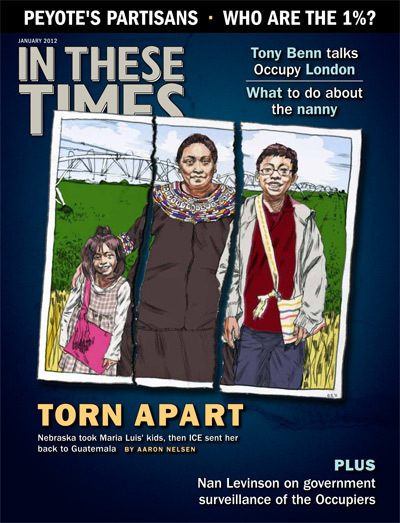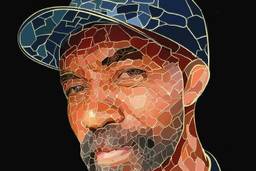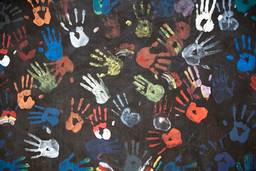The Lonesome Death of Josh Dylan Pfenning
A man who is unhoused kills himself at an Occupy encampment, underscoring America’s widening chasms.
Terry J. Allen

Intentionally or not, the death of a man occupying City Hall Park in Burlington, Vt., carries a political message. On November 10, Joshua Dylan Pfenning, 35, killed himself. It is not clear whether he fired the fatal shot accidentally or intentionally.
Described by the media as a “transient,” Pfenning was living in a tent with the protesters. Whatever else he was, he was certainly one of the 99% who has not shared Wall Street’s wealth and privilege or the American dream.
“Josh had been drinking whiskey since early in the morning,” said one witness, and by 2 p.m. he and three other men in the tent were intoxicated, according to several witnesses. At some point, Pfenning produced a gun, demonstrated how to break it down, and put it back together.
Pfenning pointed the reassembled gun at one of his companions, according to a witness. He then turned it on himself, and forced another man’s hands around it. The man said he pulled away “just in time,” before Pfenning, gun to his head, said, “Watch this,” and pulled the trigger. “From the look of surprise on Josh’s face, you could see he wasn’t expecting it to go off,” one eyewitness said. “He was messing around,” said another. “I’d like to believe it was an accident.” But all acknowledge suicide is a possibility.
If that is the case, Pfenning, an occasional day laborer, will join a growing number of homeless and unemployed people who have taken their own lives. Suicide is the seventh-leading cause of death for males (sixteenth for females), and the rate for unemployed people is two or three times the national average. The longer people are unemployed, the more likely they are to commit suicide. This phenomenon has played out across place and time, with the rate increasing by 20 percent during the Great Depression and spiking by as much as 40 percent among men in parts of Asia during the 1997 economic crisis.
The day after Pfenning’s death, some of the witnesses gathered in City Hall Park. It’s usually a pleasant spot for farmers’ markets and concerts, but also a gathering place for the city’s homeless. The Burlington police declared half the park a crime scene and shut down the occupation. A few dozen abandoned tents fluttered in the cold early winter wind as leaves – the same bright yellow as the encircling ribbons of police tape – blew like confetti. Attached to the place by bonds of shock, anger and sorrow, along with a need for community and companionship, witnesses to the shooting gathered in the still-open side of the park. Some had nowhere else to go.
As the afternoon light began to fade, two men who had been in the tent with Pfenning swung between belligerence and tears, torn between needing to tell the horrific tale and wanting to control the story and protect their friend’s reputation. Everyone had kind words for Pfenning: generous, cool, decent, kind and, all emphasized, really funny. But his friends also described him as damaged and alcoholic.
“He was troubled, like a lot of people,” said another man, also named Josh. His father is an academic and his family believes, as does Josh himself, that he has not lived up to his potential. “I am an alcoholic,” he says, “and actually, although you can’t tell, I am drunk now.”
Some of the people who had been occupying City Hall Park were impassioned and articulate advocates who saw themselves as representing those for whom the American dream is becoming as tenuous as dreams themselves. Others, like Pfenning and his companions, were the clear and desperate losers in a system that skews access to wealth, privilege and opportunity.
Although not ideological, “Josh was political in that he embodies perfectly the systems that are failing,” said Jamie Jackson, a 20-year-old University of Vermont student activist.
Anthony, his voice rough and his face grim, sits on a cold bench staring at the emptied occupation. He has cancer, he says, and can’t get needed treatment. The tragedy has changed him, he says. “Josh would give anything to anyone.”
One of the 99%, Pfenning pulled the trigger. But his gun was loaded with a mix of alcohol, unemployment and despair.

I hope you found this article important. Before you leave, I want to ask you to consider supporting our work with a donation. In These Times needs readers like you to help sustain our mission. We don’t depend on—or want—corporate advertising or deep-pocketed billionaires to fund our journalism. We’re supported by you, the reader, so we can focus on covering the issues that matter most to the progressive movement without fear or compromise.
Our work isn’t hidden behind a paywall because of people like you who support our journalism. We want to keep it that way. If you value the work we do and the movements we cover, please consider donating to In These Times.








